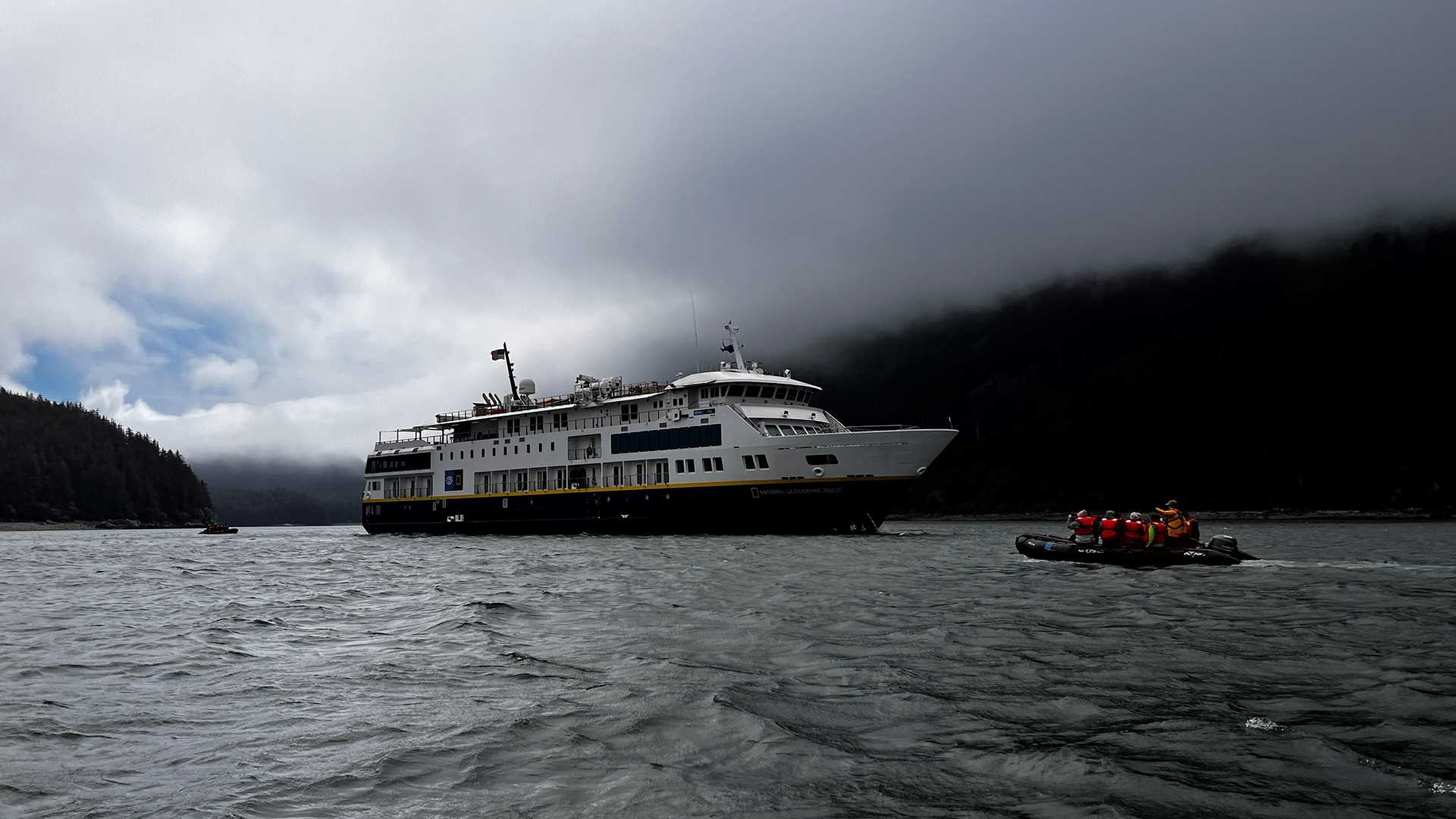We had a wonderful day! We were able to see an abundance of life in the Inian Islands! Whales came bursting from the sea below. These humpback whales can be up to 60 feet long. The whales push fish towards the shoreline so they can feed. Upwelling from below also pushes rockfish to the surface. Unable to decompress, the fishes’ eyes and bladders bulge, and the fish become food for the Steller sea lions feasting in the waters. The sea lions are all males, bulking up to become larger. Bulls can be up to 2500 pounds and eleven feet long. A series of birds feed on these fish. Bald eagles are the primary feeders. Juveniles have brown heads. As they mature, the feathers on their heads turn white, and their beaks turn yellow. We also saw pigeon guillemots and cormorants. These marine birds swarmed the island, and drifting around the rocks was another endearing surprise. Sea otters! Multiple sea otters were tied together to form what is called a raft. These sea otters have millions of hairs, so many that they do not need blubber or brown adipose fat to keep them warm. Later in the evening, guests entered Dundas Bay for a relaxing and meditative hike. Dundas is part of Glacier Bay National Park. Guests had the chance to kayak and Zodiac as well. During these amazing excursions, the undersea team collected footage that included marvelous views of massive ribbon kelp. The footage played during cocktail hour. Overall, it was an exceptional day!
6/14/2025
Read
National Geographic Quest
Southeast Alaska
On the last full day of our voyage, we woke in Endicott Arm near the Dawes Glacier. We spent the morning enjoying Zodiac tours to the face of Dawes Glacier and watched multiple calving events. We were also able to spot several harbor seals, waterfalls, and a couple harbor porpoises on the way. After lunch we had the opportunity to participate in a polar plunge. Forty people decided to brave the frigid water for a short swim. Those of us not eager to jump into glacier water were able to watch from the bow. After the polar plunge, we warmed up on board as we started transiting towards Juneau. On the way, we stopped at a beautiful waterfall to once again admire the amazing natural beauty of Alaska. During our farewell recap, we were treated to a quick visit by a humpback whale. We ended our day with a slideshow made up of our favorite photos and memories of an amazing week on board National Geographic Quest .







